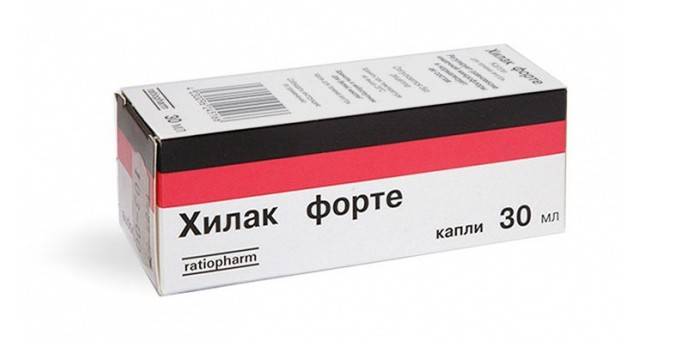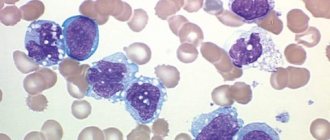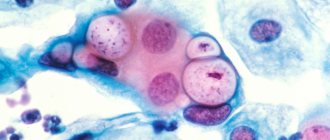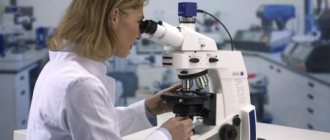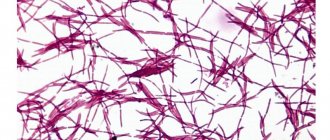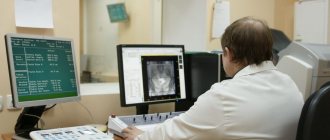Coprogram (stool analysis) is a study of the physical, chemical and microscopic characteristics of feces.
A paid stool test can be taken at the Yekaterinburg Medical Center. Tests are taken any day of the week at a time convenient for you from 8:00 to 10:00.
What does a stool test show?
A paid stool test at the EMC allows you to diagnose the presence of worms, dysfunction of the stomach, pancreas, liver, the presence of accelerated passage of food through the stomach and intestines, malabsorption in the duodenum and small intestine; inflammatory process in the gastrointestinal tract, ulcerative, allergic, spastic colitis.
Indications for the purpose of analysis
- Diagnosis of diseases of the digestive system.
- Evaluation of the results of treatment.
- Diagnosis of stool for the presence of worm eggs.
What is iodophilic flora in the stool of an adult?
The intestines of adults contain beneficial and opportunistic microorganisms. The former include lacto- and bifidobacteria, the latter – iodophilic microflora. It causes fermentation, breaking down starch into glucose and acids. If the intestines contain a large volume of digestible plant fiber or easily digestible carbohydrates, then the activity of putrefactive and fermentation processes increases, and pathogenic fecal flora develops.
Iodophilic bacteria are gram-positive, including clostridia; pathogenic bacteria include yeast, cocci and bacilli. In a healthy adult, such microorganisms live inside the large intestine and are few in number. In children, iodophilic flora is not present, or it is present, but in moderate amounts. If the indicators are higher, this indicates possible diseases and pathologies of the gastrointestinal tract. The norm for beneficial fecal flora is considered to be 10*7-10*11 for lactobacilli and 10*5 for bifidobacteria.
Normal stool test values
| Macroscopic examination | |
| Consistency | dense |
| Form | decorated |
| Color | brown |
| Smell | fecal, unsharp |
| pH | |
| Slime | absent |
| Blood | absent |
| Leftover undigested food | none |
| Chemical research | |
| Reaction to occult blood, protein | negative |
| Reaction to stercobilin, bilirubin | positive |
| Microscopic examination | |
| Muscle fibers with striations | none |
| Muscle fibers without striations | units in the preparation |
| Connective tissue | absent |
| Fat neutral | absent |
| Fatty acid | absent |
| Fatty acid salts | insignificant amount |
| Digested plant fiber | units in the preparation |
| Intracellular starch, extracellular starch | absent |
| Iodophilic flora is normal | units in the preparation |
| Iodophilic flora | pathological absent |
| Crystals, epithelium | absent |
| Leukocytes, red blood cells | none |
| Protozoa, worm eggs, yeasts | none |
You can take a scatological stool test for a fee at any of our branches at any time convenient for you (from 8:00 to 20:00).
See also: laboratory analysis service
Pathological iodophilic flora in coprogram
To diagnose an adult, the coprogram method (microscopic examination of stool) and general stool analysis (includes physical and chemical methods) are used. The iodophilic flora got its name due to the fact that iodine or Lugol’s solution is used to identify it. The resulting stool sample from an adult or child is treated with a reagent, and the reaction is observed under a microscope. When interacting with iodine, bacteria turn dark blue or purple. For example, clostridia are pigmented only in the center, while yeast and cocci are entirely pigmented.
If the amount of beneficial fecal flora in an adult is reduced, then iodophilic flora takes its place. According to the norm, it should not be present, or it should be present only sporadically. When interpreting the stool analysis, 1+ or 2+ is indicated. This means that one or two cells of pathogenic single-celled pathogens are visible. 1+ often indicates an unhealthy diet or poor test preparation. It includes:
- two days before harvesting, remove beets, rhubarb, tomatoes, sweet peppers (coloring products), and gelatin-based desserts from the diet;
- stop taking antibiotics, enzymes and contrast agents;
- include vegetables, cereals, and dairy products in the diet;
- Women need to collect feces between periods.
After correcting the diet and careful preparation, a repeat analysis is carried out. If the level of fecal flora remains elevated after it, then this indicates abnormalities in the functioning of the intestines, which requires certain treatment. Specialists carry out complex therapy, which consists of increasing immunity, correcting nutrition, and taking medications so that the iodophilic flora in the feces of an adult is normalized.
- The child grinds his teeth in his sleep
- Chicken satsivi - step-by-step recipes with photos. How to cook chicken in nut sauce in Georgian style
- How to cook delicious rabbit
How to prepare for research
7-10 days before the test, stop taking medications (all laxatives, bismuth, iron, fat-based rectal suppositories, enzymes and other drugs that affect the processes of digestion and absorption). You can't do enemas the day before. After an X-ray examination of the stomach and intestines, stool analysis is possible no earlier than two days later.
How to properly collect stool for research?
Feces are collected after spontaneous bowel movements in a disposable plastic container with an airtight lid. Mixing urine into stool should be avoided.
Is it possible to store a stool sample?
The container with stool must be delivered to the laboratory on the day of collection of the material, and stored in the refrigerator (4 - 6 C0) until shipment.
Signs of iodophilic flora
If iodophile bacteria are found in the stool of an adult, this is not always a sign of a disease, but it is worth visiting a therapist or gastroenterologist. The appearance of flora depends on the diet, so it can be adjusted by making changes in diet. Symptoms of excess pathogenic microorganisms are:
- green mucus in stool;
- frequent bloating;
- discomfort or pain in the abdomen;
- flatulence;
- diarrhea, constipation;
- dysbacteriosis;
- a sharp decrease in appetite;
- weight loss;
- bloody stools;
- chronic fatigue, depressed mood;
- false urge to defecate with increased frequency.
Why was pathological iodophilic flora found in the coprogram?
If iodophilic flora is detected in a coprogram, this may indicate various reasons - from taking medications to serious illnesses. The main factors influencing the appearance of microorganisms are:
- long-term or frequent use of antibiotics without medical supervision and parallel use of pro- and prebiotics;
- the presence in the diet of predominantly carbohydrate foods or foods high in fiber (sweets, fresh fruits, vegetables, bread, pasta, cereals, starch);
- decreased immunity;
- disturbance of intestinal motility;
- helminthic infestations, helminthiasis or infection with parasitic worms;
- abnormalities in the small intestine;
- gastritis, pancreatitis;
- chronic inflammation of the pancreas;
- ulcerative colitis, Crohn's disease.
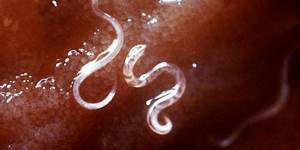
Iodophilic flora Komarovsky. What does it mean to identify iodophilic flora in a child’s coprogram?
Many parents are not even aware of the importance of having their child's stool tested. But the results can tell a lot. For example, about the presence of iodophilic flora in a coprogram. The intestinal microflora of each person is individual, but the identification of pathogenic bacteria may indicate diseases that can begin to develop under certain conditions. The danger lies in the absence of obvious deviations in health. Detection of pathogenic bacteria is impossible in any way other than laboratory testing.

Iodophilic flora is easily detected using a coprogram
What it is
Iodophilic flora is a collection of bacteria capable of converting starch into glucose and certain acids. The released enzymes start the fermentation process in the intestines. The consumption of large amounts of carbohydrates by children contributes to the proliferation of such microorganisms.
The iodophilic flora received its name due to the ability of microorganisms to turn black when in contact with iodine solutions.
The intestinal microflora consists of:
- beneficial bacteria;
- opportunistic microorganisms.
Only due to the predominance of beneficial flora, the child feels healthy, and harmful microorganisms do not have the opportunity to multiply and cause various inflammations.
The presence of a tiny amount of iodophilic flora is allowed in the coprogram. Less is better. The diagnosis is made based on the transcript received by the doctor with obligatory attention to accompanying symptoms or the results of additional examinations.
Common Causes of the Presence of Pathogenic Bacteria
Several factors contribute to the proliferation of pathogenic microorganisms that make up the iodophilic flora. The most common ones are:
- dysbacteriosis;
- increased peristalsis;
- insufficient amount of bile or gastric juice;
- purulent inflammation of the intestines;
- pathological processes in the pancreas;
- irritation of the intestinal walls with undigested food, which allows the infection to more easily penetrate the body.
Coprology can give a comprehensive answer about the presence of pathogenic bacteria and their quantity. Taking appropriate measures and actions will help determine the exact reasons for the appearance of iodophilic flora in the coprogram.
Causes of iodophilic flora in infants
Iodophilic flora in the coprogram can be found in both newborns and children under one year old. Its appearance depends on what the baby eats.
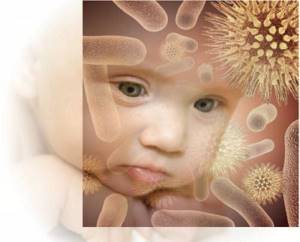
Small organisms are most susceptible to pathogenic microorganisms
If the child is breastfed, then with a high probability this may mean the presence of dysbacteriosis. Adequate treatment will be the use of special drugs: bacteriophages, probiotics.
When a baby receives artificial nutrition, changing the milk formula will help improve coprogram performance. Also, with age, the introduction of complementary foods and the consumption of large quantities of carbohydrate foods, the presence of iodophilic flora can be seen in the results of stool coprogram. This is due to the fact that such food takes a long time to digest, and the prolonged presence of carbohydrates in the intestines causes fermentation.
The detection of iodophilic flora in the coprogram of a child under one year of age indicates a sharp decrease in the number of beneficial microorganisms. Instead of the usual lacto- and bifidobacteria, the intestines now contain many rods, cocci and yeast cells. Improper nutrition can provoke an increase in the number of enterococci, which will cause the growth of pathogenic flora.
What to do
As a rule, if iodophilic flora appears in the coprogram and there are no additional symptoms and pathologies, the child is not prescribed any special treatment. The most important path to recovery will be adjusting your diet. Sometimes you may need to take probiotics.
It is worth limiting carbohydrates and sugar in your diet. Meat and fermented milk products will be the most beneficial for your child.
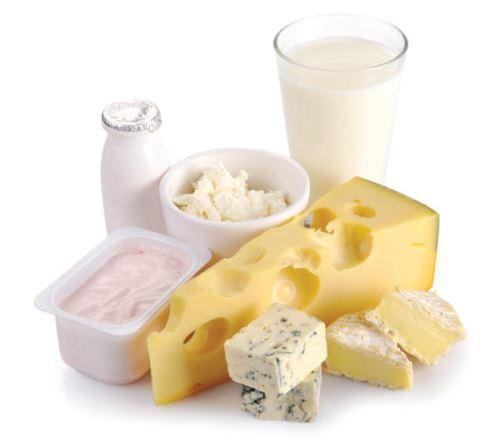
Fermented milk and meat products play an important role in normalizing intestinal microflora
Sometimes the presence of pathogenic flora in the coprogram in children indicates pancreatitis or gastritis. This is not surprising given the poor environmental conditions and poor diet. Further examination by a specialist will allow you to accurately establish the diagnosis and receive effective treatment.
Most often, you can normalize intestinal function and get rid of iodophilic flora by introducing a full menu and some dietary restrictions. Then the coprogram will become just a routine test for an infant or an older child.
I have two educations: technical and economic. I am also interested in raising children, medicine, women's issues, travel, psychology, as well as design and renovation.
Treatment
If the value of iodophilic flora in the feces of an adult is overestimated, the patient will have to undergo a series of diagnostic procedures to identify the cause and make an accurate diagnosis. The main diagnostic methods are ultrasound examination of the gastrointestinal tract, a comprehensive analysis of intestinal flora and a biochemical blood test. After this, therapy is prescribed, consisting of taking medications, adjusting the diet and stopping the growth of pathogenic microflora.
Traditional therapy consists of taking medications, divided into groups depending on the type of action:
- Antimicrobial bacteriophages - prevent pathogenic fecal flora from multiplying and reduce its level. These include Sextafag, Intesti, Piobacteriophage, Klebsiella, Pseudomonas aeruginosis. Bacteriophages are viruses that can destroy a certain type of pathogenic flora. Once inside the intestines, they “dissolve” harmful microbial cells, use them for nutrition and reproduction, infecting new ones. Gradually, the pathogenic flora dies off, and a fully beneficial flora takes its place in the organ. Bacteriophages are produced in the form of drops, solutions, tablets, and are taken once a day for a course of 5-7 days. The exact treatment parameters are determined by the attending physician.
- Taking probiotics based on live lactic acid bacteria, which restore the level of beneficial fecal flora. These are Enterol, Linex, Bifidumbacterin, Bifiform, Acipol, Biosporin, Acylact. They are available in the form of tablets, enteric-coated capsules, powders or drops. The medications are taken according to the instructions - approximately 1-2 times/day for a course of 7-10 days. This time is enough to strengthen the beneficial microflora and create conditions favorable for its reproduction. In this way, dysbiosis is eliminated and pathogenic fecal flora is suppressed.
- The use of prebiotics - drugs that restore the normal intestinal environment. They create the basis of nutrition for beneficial microbes; they are not absorbed by the body, but have a beneficial effect on its functioning, selectively stimulating the growth of microorganisms. Most prebiotics belong to fiber, but in the presence of iodophilic flora it is prohibited. Therefore, inulin-based products are used. These include Hilak Forte, Stimbifid, Exportal.
